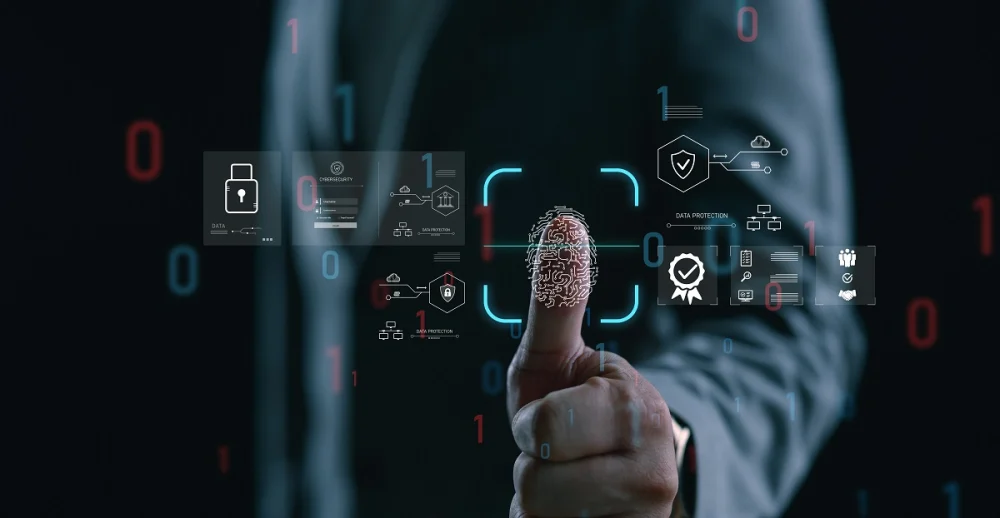KYC remediation occurs after onboarding is complete. Remediation is the process of digging into existing client files to fix missing or expired information, update changes in ownership, and re-score risk against today’s increasingly stringent regulatory requirements. For regulators, there is no distinction between new and existing customers; full current files are expected, regardless of when the business relationship was established.
KYC remediation has become necessary due to the increasing prevalence of financial crime, updated sanctions lists, and more detailed expectations regarding audits and reporting. These pressures aren’t limited to traditional banks. Crypto exchanges and virtual asset service providers (VASPs) are now also required to remediate outdated KYC files to comply with regulations like the Financial Action Task Force (FATF) guidelines and the EU’s MiCA framework.
Financial institutions can no longer rely on legacy systems and static records that don’t provide a comprehensive and up-to-date picture. Modern remediation programs now incorporate open-source intelligence (OSINT), fraud detection tools, and behavioral analytics to uncover hidden risks beyond static documents.
In this guide, we’ll discuss what KYC remediation is, when it is necessary, provide a step-by-step breakdown of the remediation process, and explain how OSINT and platforms like ShadowDragon Horizon™ reveal hidden risks in customer files that may slip past traditional screening.
What is KYC Remediation?

KYC remediation is the process of reviewing, correcting, and updating existing customer files to address gaps and meet new or more stringent regulatory, risk, or data quality requirements. Different from onboarding or enrolling a new client, when identity verification and other KYC processes occur for the first time, remediation involves revisiting existing client records and validating expired or incomplete identity documents, updating beneficial ownership data, cleaning up inconsistencies, and re-scoring risk based on new standards.
Financial institutions have thousands, if not millions, of legacy customer records on their books. A vast majority of them were onboarded years ago under the previous compliance rules or with lower levels of due diligence.
Regulators expect those files to be up-to-date and compliant with the standards that exist today, not the standards that were in effect at the time of onboarding. KYC remediation enables banks and other financial institutions to bring their existing customer records into compliance with current requirements for risk management and regulatory oversight.
Why is KYC Remediation Important?
KYC remediation is crucial for ensuring compliance, mitigating risk, maintaining data integrity, preventing financial crimes, and fostering customer trust.
- Regulatory compliance – Regulators, including the Financial Industry Regulatory Authority (FINRA), the Financial Conduct Authority (FCA), the Financial Action Task Force (FATF), and local regulators worldwide, require financial institutions to maintain accurate and up-to-date customer data. Inaccurate customer data, often due to missing records, expired identification, unverified addresses, or inconsistencies between source documents, is one of the most common reasons regulators issue KYC/AML fines.
- Risk reduction – Incomplete or outdated customer data makes it more difficult to identify high-risk customers, public officials, and their close associates who may be at greater risk of being involved in bribery or corruption (politically exposed persons, or PEPs), sanctioned entities, or organized crime and terrorist networks that may be hiding behind shell companies.
- Data integrity – Clean and normalized customer data enhances screening performance, reduces false positives, and significantly simplifies auditing compliance processes.
- Financial crime prevention – Criminals exploit outdated records and dormant accounts. Remediation efforts assist with the detection of fraud, money laundering, and other types of illicit activity that were missed during the original KYC process.
KYC remediation helps to reduce financial crime, lower operational risk, and build stronger customer relationships. It also sets a strong foundation for ongoing customer due diligence, monitoring, and OSINT-driven investigations.
The table below compares KYC remediation to a KYC refresh and ongoing monitoring to clarify where each process fits within the broader compliance lifecycle.
| Feature | KYC Remediation | KYC Refresh | Ongoing Monitoring |
|---|---|---|---|
| Purpose | Correct legacy customer files to meet current standards | Scheduled periodic update of customer data | Continuous screening for changes in risk |
| Trigger | Regulatory demand, mergers, outdated files, internal audit | Risk-tier based schedule (1–5 years) | Real-time alerts (sanctions, adverse media, OSINT findings) |
| Scope | Large backlog of legacy clients | Active clients only | Active high-risk clients |
| OSINT Role | Reveals hidden UBOs, aliases, adverse data | Supports validation of updated info | Tracks new risks across the open web and dark web |
When is KYC Remediation Required?
KYC remediation is typically triggered when something changes, such as regulations, a customer’s risk level, or even an update to internal software. The most common trigger events include:
- Regulatory findings or enforcement actions. Legacy files are most commonly revisited as a result of a compliance inspection or a regulator’s notice. There’s often a strict deadline to comply, which pressures institutions to go through and close gaps in older files.
- Periodic review cycles. High-risk customers typically undergo annual file reviews, while lower-risk profiles receive revalidation every two to three years. During the review, any gaps in data or outdated information are remediated.
- Mergers, acquisitions, or product migrations. Customer data from another financial institution, or being migrated from one KYC onboarding solution to another, results in mismatched or missing documents. These must be reconfirmed.
- System upgrades or platform changes. Similar to customer migrations, updating the backend technology of KYC practices reveals issues in legacy files. Old data is inconsistent and must be revalidated to meet current standards.
- Sanctions, politically exposed persons (PEP) lists, or regulatory updates. Updates to sanctions lists, PEP databases, and AML regulations require institutions to reassess their customer profiles and revalidate the associated data.
- Adverse media or new intelligence. Negative press or investigations related to existing customers require those accounts to be reviewed and remediated promptly.
Step by Step KYC Remediation Workflow
KYC remediation is the process of updating legacy customer files to meet modern regulatory and risk requirements. The workflow below illustrates how teams typically progress from scoping/planning to reassessment, documentation, and then back to business as usual, including the role of OSINT in revealing obscured risks and verifying customer information.
1. Scope and Planning
KYC remediation begins with defining the population of customer files in scope. This may be scoped based on product, region, risk tier, or the age of the file. Remediation teams then set goals, timelines, SLAs, and clear responsibilities using a clear RACI (Responsible, Accountable, Consulted, Informed) model.
The existing data is then mapped to identify known gaps such as missing documents, expired IDs, incomplete ultimate beneficial owner (UBO) information, or stale screening results. Firms should evaluate which files are missing OSINT intelligence, such as digital profiles or alias history, at this phase and make decisions to remediate that gap using tools like ShadowDragon Horizon™.
2. Triage and Prioritization
After scoping, files are prioritized. High-risk jurisdictions, complex corporate structures, dormant accounts, or customer records that have never been screened are prioritized for review.
OSINT can be used to further triage files, such as when a customer’s alias is found in breach datasets or when ShadowDragon Horizon™ uncovers unexpected connections. Sample files for regulatory assurance should include files where OSINT has flagged potential issues.
3. Data Collection and Customer Outreach

The institution collects updated documents, including identity verification, proof of address, corporate filings, UBO attestations, and source-of-funds/source-of-wealth documentation. This can be executed through emails, secure online portals, or delegated to relationship managers.
Rules can be set to escalate non-responsive customers to the top of the queue. For customers who fail to provide requested information, OSINT tools like Horizon™ Identity can be used to further validate identities, confirm relationships, and visualize online behaviour patterns independently of customer-provided data.
4. Screening and Intelligence
Profiles are screened against sanctions lists, PEP databases (politically exposed persons are people who hold prominent public positions, such as government officials, their family members, and close associates, who are vulnerable to corruption or financial crime due to their influence), and adverse media. This is then enriched through OSINT. With ShadowDragon Horizon™, investigators can pivot between usernames, websites, and social profiles.
Horizon™ Monitor can help to track dark web forums, breach datasets, and emerging narratives. Relationship mapping can help identify concealed beneficial owners or associated parties. Any intelligence discoveries and their contribution to decision-making should be recorded and reported, which can be created within the platform.
5. Risk Re-Assessment
Firms use the new information to re-score each customer using their risk model, incorporating any OSINT findings or new relationships that have been discovered. A brief risk narrative is generated to note why the re-review was triggered, such as “Reassessment was initiated following OSINT finding an alias name found in connection with discussions involving a sanctioned entity.”
If needed, EDD is initiated. OSINT can help by providing historical alias names, new connections, or dark web mentions to substantiate a higher risk rating.
6. Decisioning and Remediation Actions
At this point, institutions determine, based on their reassessment, whether to retain the customer, impose restrictions, subject them to increased monitoring, or sever ties with the customer. The reasons for the decision should be well documented.
If an OSINT source was instrumental in the decision, such as Horizon™ flagging a client’s association with offshore shell companies, then this should be noted in the decision documentation. If the risk is to remain high, then the institution should implement OSINT continuous monitoring as a follow-up action.
7. Recordkeeping and Evidence
The evidence pack is prepared, providing clear documentation of the actions taken during the remediation process. This evidence pack will include updated documents, verification steps, screening reports, OSINT outputs, and network graphs. It should also include any policies and procedures used during the remediation process, and there should be a clear, timestamped audit trail of who opened the file and what OSINT modules they utilized.
8. Quality Assurance, Quality Control, and Issue Management
Quality assurance and quality control are performed through dual reviews and risk-based sampling. The institution tracks errors, such as missing OSINT reviews, unaddressed matches, or weak rationales.
Root-cause analysis helps determine why an OSINT alert was ignored or otherwise mishandled. Metrics are reported to management, such as the number of escalations, false positives, and the volume of rework required.
9. Closeout and Transition to Business As Usual (BAU)
Once remediated, the process now moves into Business-as-Usual (BAU). Onboarding and monitoring workflows are updated to include the use of OSINT tools such as ShadowDragon Horizon™ or Horizon™ Monitor by default.
Staff are trained on how to interpret the results of OSINT queries and how to perform alias and network analysis. A post-implementation review determines the number of legacy profiles discovered to have hidden risks using OSINT, and a lessons learned log is compiled.
Continuous monitoring is enabled. Horizon™ Monitor, for example, tracks mentions on the dark web, new aliases, or website registrations associated with high-risk clients as part of ongoing supervision.
Intelligence-Led KYC Remediation with ShadowDragon
KYC remediation enables institutions to clean legacy customer data, close regulatory gaps, and surface risks buried in outdated files. Regulators, auditors, and threat actors are all operating in real time, meaning legacy records, expired IDs, and broken ownership trails can’t be left behind.
OSINT enhances remediation with intelligence. Public sources, such as news, court filings, social media, breach data, and dark web activity, can expose risks that standard databases often miss. ShadowDragon turns that signal into evidence: Horizon™ Identity draws aliases and identities together, Horizon™ maps networks across open and dark web data, and Horizon™ Monitor tracks changes in exposure.
With OSINT built into remediation, teams can identify hidden UBOs, detect emerging threats, justify risk decisions, and create defensible audit trails. More importantly, remediation becomes a critical step in a continuous, intelligence-driven KYC process. Schedule a ShadowDragon demo today to bring intelligence into your KYC remediation process.





